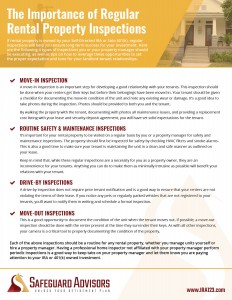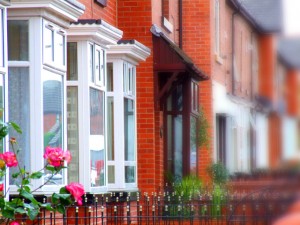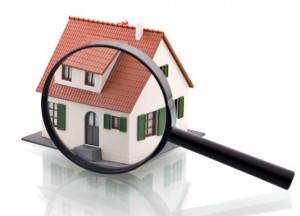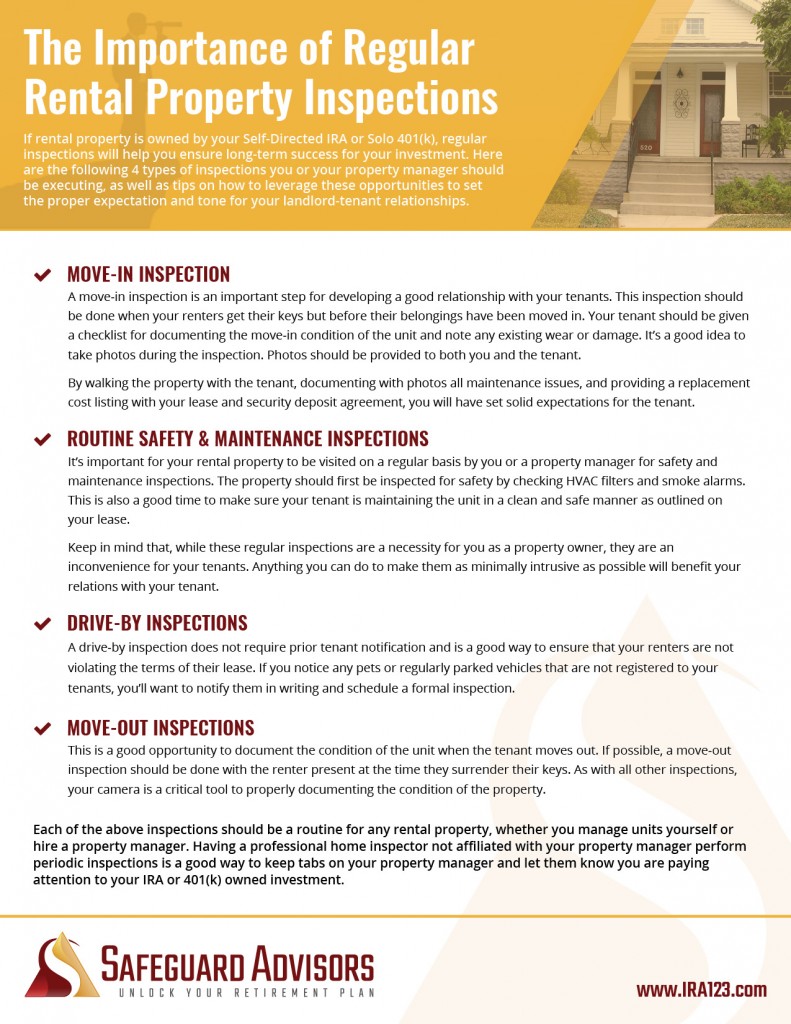The Importance of Regular Rental Property Inspections for Landlords or Property Managers [CHECKLIST]
 When your Self Directed IRA or Solo 401(k) owns rental property, regular property inspections are a critical piece of ensuring your investment’s long term success. Inspections help you keep tabs on the condition of the property over time, how a particular tenant maintains (or trashes) a property, or even how your property manager is performing. By establishing a routine of regular and well documented inspections, you can protect yourself against destructive tenants and create a detailed record should you ever need to take an eviction or security deposit matter to court.
When your Self Directed IRA or Solo 401(k) owns rental property, regular property inspections are a critical piece of ensuring your investment’s long term success. Inspections help you keep tabs on the condition of the property over time, how a particular tenant maintains (or trashes) a property, or even how your property manager is performing. By establishing a routine of regular and well documented inspections, you can protect yourself against destructive tenants and create a detailed record should you ever need to take an eviction or security deposit matter to court.
Following is information on the several types of inspections you or your property manager should be executing, as well as tips on how to leverage these opportunities to set the proper expectation and tone for your landlord-tenant relationships.
Move-In Inspection
A tenant move-in inspection is probably the 2nd most important step you can take to ensure a good tenant relationship, after good tenant selection and screening.
This inspection should take place when the tenant gets the keys and before their belongings have been moved into the unit. The tenant should be provided with checklist so that they can document the move-in condition of the unit and note any existing wear items or damage.
This is not an opportunity for them to present a wish list of improvements, though of course if there is a significant issue you and your team missed prior to making the unit available, that should be corrected. Rather, this is an opportunity for the tenant to protect themselves at the time of move-out, and for you to set expectations as to what condition is acceptable.
Many landlords or property managers will include a sheet that lists the costs of common repairs, so that a tenant will know what to expect when it comes time to make deductions from a security deposit.
Any issues with the property should be photographed and a copy of the photos and inspection should be provided to both you and the tenant.
By walking the property with the tenant, documenting with photos all maintenance issues, and providing a replacement cost listing with your lease and security deposit agreement, you will have set solid expectations for the tenant.
Routine Safety & Maintenance Inspections
You or your property manager need to visit the property on a regular basis. Depending on the neighborhood and type of renters, this might be on 6 month intervals or every 3 months. If you go any longer than 6 months, you are pushing your luck.
 The purpose of the inspection should be twofold. Firstly, you should be inspecting and maintaining the property itself to ensure safety. Things like HVAC filters and smoke alarms should be checked on and replaced as needed. This is also an opportunity to ensure that the tenant is maintaining the property in a clean and safe fashion as outlined in your lease.
The purpose of the inspection should be twofold. Firstly, you should be inspecting and maintaining the property itself to ensure safety. Things like HVAC filters and smoke alarms should be checked on and replaced as needed. This is also an opportunity to ensure that the tenant is maintaining the property in a clean and safe fashion as outlined in your lease.
As with the move-in inspection, you should have a good checklist that is completed and signed by you or your agent, and a copy should be provided to the tenant. Any issues should be documented and if they are the tenant’s responsibility to address, a timeline should be set and a follow-up inspection scheduled.
Your lease and move-in documentation should outline these periodic inspections and you will want to schedule them in advance so that you can provide proper notice to your tenants as required in your jurisdiction.
Keep in mind that, while these regular inspections are a necessity for you as a property owner, they are an inconvenience for your tenants. Anything you can do to make them as minimally intrusive as possible will benefit your relations with your tenant. If you schedule an inspection for 9 am, for example, you sure better be there at exactly 9 am.
We’ve even known landlords who reward tenants with clean, well maintained units with some kind of small perk such as a coffee shop or movie theatre gift card. It is a nice way to thank them for their time and effort, and can be a key to retaining the tenants you really want in your rental.
Drive-By Inspections
Unlike formal, interior inspections of your rental, drive-by inspections do not require prior tenant notification. These types of inspections are a key way to ensure that the tenant is not violating certain terms of the lease, as may be indicated if you see pets or if there are regularly more vehicles parked at the property than there are registered tenants.
If things look amiss, you should notify the tenant in writing, and will likely want to schedule a formal inspection.
Move-Out Inspections
 This is your opportunity to effectively document the condition of your property when a tenant moves out. If at all possible, you should conduct this inspection with the tenant present when they surrender the keys. This is the only true way to protect yourself if there are damages, as the tenant could deny responsibility if they just drop off the keys at your office and you inspect the property at a later date. As with all other inspections, your camera is a critical tool to properly documenting the condition of the property.
This is your opportunity to effectively document the condition of your property when a tenant moves out. If at all possible, you should conduct this inspection with the tenant present when they surrender the keys. This is the only true way to protect yourself if there are damages, as the tenant could deny responsibility if they just drop off the keys at your office and you inspect the property at a later date. As with all other inspections, your camera is a critical tool to properly documenting the condition of the property.
The above inspections should be a routine for any rental property, whether you manage units yourself of hire a property manager. In fact, ensuring that a solid, regular, well-documented regimen of inspections is part of the services provided by a property manager should be one of the keys to your selection of such a vendor.
If you use a third party property manager, and especially if the property is not in your local market, you may want to consider an additional type of inspection. Having a professional home inspector not affiliated with your property manager perform periodic inspections is a good way to keep tabs on your property manager and let them know you are paying attention to your IRA or 401k owned investment.
Download the full checklist here.
Talk to An Expert Today!
Learn these little known strategies and tactics, and unlock your retirement plan today.

